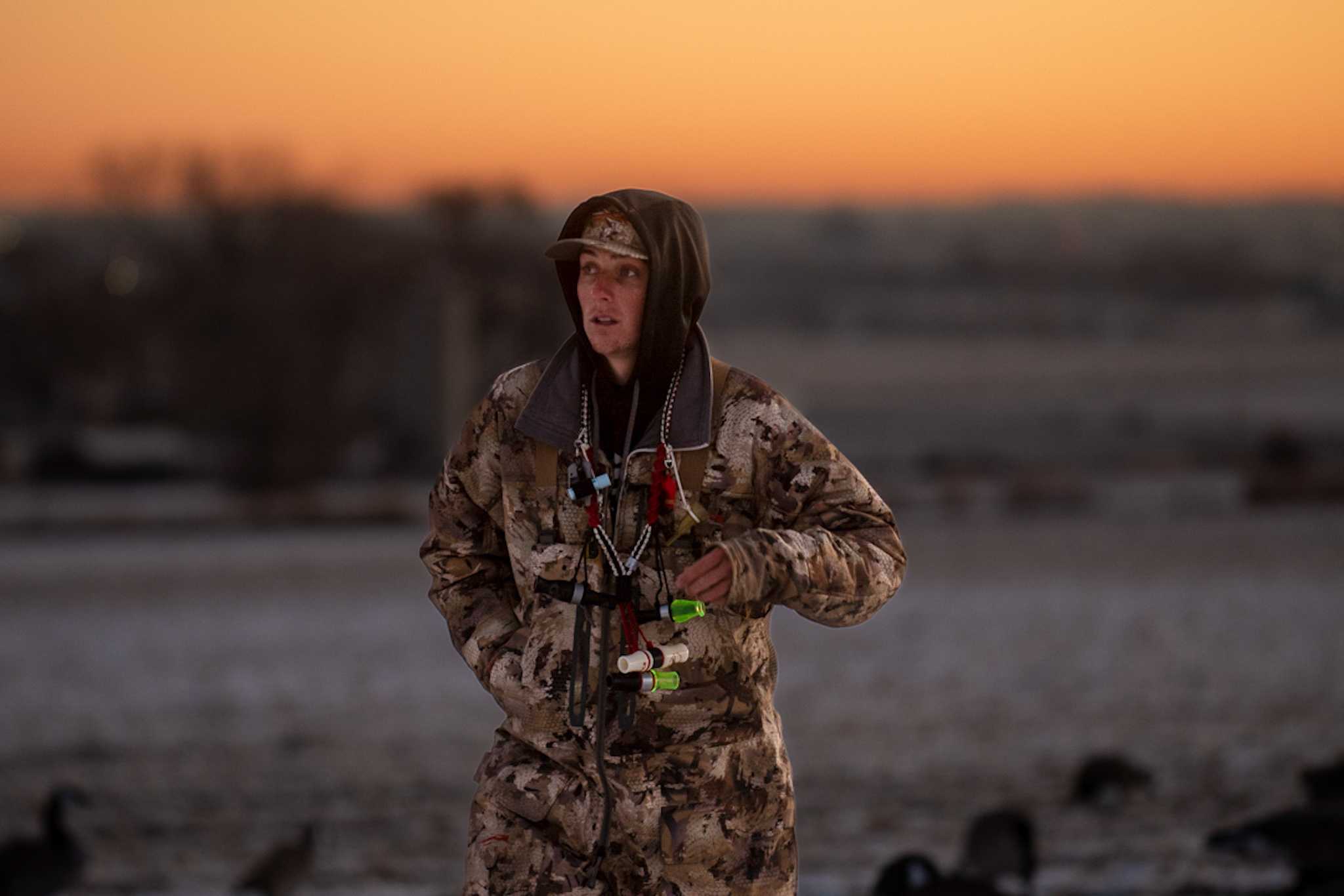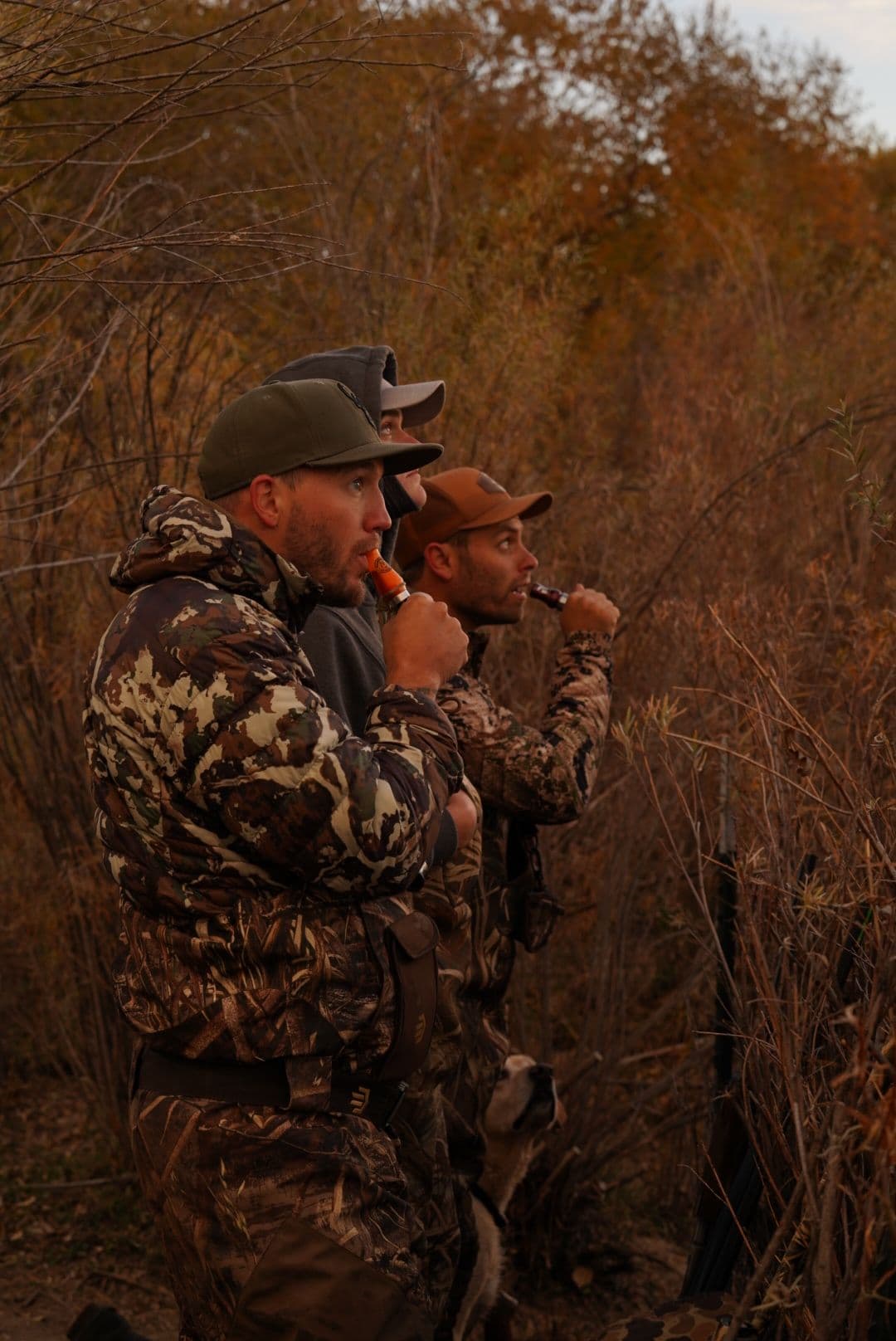Preparing for Duck Season: A Comprehensive Guide


Justin Hunold
06/14/2024
As the leaves change and the temperatures drop, duck hunters nationwide know it’s time to gear up for duck season. Whether you’re a seasoned veteran or a novice eager to experience the thrill of waterfowl hunting, preparation is critical to a successful season. Here’s a comprehensive guide to help you get ready for duck season, covering everything from federal regulations and flyways to gear checklists and advanced preparation strategies.
The Federal Structure of Duck Season
Duck hunting in the United States is regulated at federal and state levels. The U.S. Fish and Wildlife Service (USFWS) sets the framework for hunting seasons, which includes start and end dates, daily bag limits, and possession limits. These regulations ensure that duck populations are managed sustainably.
Before you head out, you’ll need to obtain a federal duck stamp, also known as the Migratory Bird Hunting and Conservation Stamp. This stamp is a requirement for all waterfowl hunters aged 16 and older and helps fund conservation efforts. In addition to the federal duck stamp, hunters must acquire a state hunting license and, in many cases, a state-specific waterfowl permit.
Understanding North American Flyways
North America is divided into four primary flyways that ducks and other migratory birds use during their seasonal migrations: the Atlantic, Mississippi, Central, and Pacific Flyways. Each flyway has unique characteristics and offers different hunting opportunities. Here’s a more detailed look at what each flyway has to offer.
Atlantic Flyway
The Atlantic Flyway is a rich corridor for waterfowl migration from the eastern Canadian provinces down to Florida's Atlantic coast. Hunters along this flyway can expect to encounter a variety of species:
- Mallards: Mallards are one of the most common and adaptable ducks. They are found throughout the flyway and frequent various habitats, including wetlands, rivers, and coastal marshes.
- Black Ducks: Known for their dark plumage and preference for coastal areas, they are a prized target for many hunters. They are often found in salt marshes, estuaries, and coastal bays.
- Teal: Both green-winged and blue-winged teal are prevalent in the Atlantic Flyway. These small, fast-flying ducks are often among the first to migrate south in the fall, making early-season hunts particularly exciting.
Mississippi Flyway
Covering the central U.S. from the Great Lakes to the Gulf of Mexico, the Mississippi Flyway is renowned for its high concentration of waterfowl. This flyway is a significant route for birds traveling between northern breeding grounds and southern wintering areas:
- Mallards: The Mississippi Flyway is a hotspot for mallards, which utilize the region's abundant wetlands and agricultural fields.
- Canvasbacks: These striking diving ducks prefer deeper waters, such as those in the upper Mississippi River and Great Lakes regions.
- Wood Ducks: Preferring wooded swamps and shallow waters, wood ducks are a colorful and sought-after species in the flyway. They are often found in areas with abundant vegetation and cover.
Central Flyway
From central Canada through the Great Plains to the Texas coast, the Central Flyway offers diverse habitats and hunting experiences. The wide-open spaces and numerous wetlands provide excellent opportunities for waterfowl hunting:
- Pintails: Known for their long necks and graceful flight, pintails are a common sight in the Central Flyway. They favor shallow wetlands and agricultural fields.
- Gadwalls: These dabbling ducks are often found in prairie potholes, reservoirs, and marshes. They are known for their subtle coloring and preference for aquatic vegetation.
- Wigeons: American wigeons, with their distinctive white forehead patches, are frequent visitors to the Central Flyway's wetlands and lakes. They graze on grasses and submerged plants.
Pacific Flyway
Running along the western coast from Alaska to Mexico, the Pacific Flyway is home to various waterfowl species. The varied landscapes, from coastal estuaries to inland lakes, provide excellent habitat for ducks:
- Pintails: Pintails are abundant in the Central Flyway and Pacific Flyway. They utilize coastal marshes, estuaries, and inland wetlands during their migration.
- Mallards: Found throughout the flyway, mallards are adaptable to many habitats, including the affluent agricultural areas of California’s Central Valley.
- Diving Ducks: The Pacific Flyway is notable for its various diving ducks, including scaup, canvasbacks, and redheads. These species prefer deeper waters, such as coastal bays and large inland lakes.
By understanding the unique characteristics and species associated with each flyway, hunters can better plan their trips and target specific types of waterfowl. Each flyway offers its own set of challenges and rewards, making duck hunting across North America a diverse and exciting adventure.
Essential Gear Checklist
Proper preparation starts with having the right gear. Here’s an essential checklist to ensure you’re ready for the season:
- Duck Gun:A reliable shotgun, often a 12 or 20-gauge, suited for waterfowl hunting.
- Ammunition: Non-toxic shot, such as steel, bismuth, or tungsten, as lead shot is prohibited for waterfowl hunting.
- Waders: Insulated, waterproof waders to keep you dry and warm in wet environments.
- Camouflage Clothing:Weather-appropriate clothing that blends with the environment.
- Decoys: Various decoys attract ducks, including mallards, teal, and pintails.
- Calls: Duck calls to mimic the sounds of ducks and lure them in.
- Blinds:Portable or permanent blinds to conceal yourself from the ducks.
- Dog Gear: If hunting with a retriever, include a dog vest, first aid kit, and other essentials.
Preparing Your Duck Gun
Ensuring your shotgun is ready for the season is crucial. Start by cleaning and lubricating your gun to ensure smooth operation. Practice shooting at a range to refine your accuracy and get comfortable with different shooting angles and distances. Pattern your shotgun with the ammunition you’ll be using to understand how your shot spreads at various ranges. This will help you make cleaner, more ethical shots in the field.

Decoy Prep and Setups
Decoys play a vital role in duck hunting; proper preparation can make a significant difference. Clean and inspect your decoys, replacing any that are damaged. Rig them with appropriate weights and lines to prevent them from drifting in the water. When setting up, use various decoy types and positions to create a realistic scene. Popular setups include the “J” pattern, “U” pattern, and “X” pattern, each designed to mimic natural duck behavior and attract incoming birds.
Blinds and Blind Maintenance
Blinds are essential for hiding from ducks. Whether you use a portable layout blind, a boat blind, or a permanent blind, ensure it’s well-maintained and camouflaged. Check for any structural damage and repair or reinforce as needed. Use natural vegetation from the hunting area to blend your blind into the surroundings. Regular maintenance and adjustments throughout the season will keep your blinds effective.
Steel Shot and Other Non-Toxic Shot
Since the ban on lead shot for waterfowl hunting in 1991, hunters have had to adapt to using non-toxic alternatives. Steel shot is the most common and affordable option, but other materials like bismuth and tungsten offer higher density and better performance at longer ranges. When choosing your ammunition, consider the type of waterfowl you’ll be hunting and the typical shooting distances to select the best option.
Advanced Preparation Strategies
For seasoned hunters looking to elevate their duck hunting game, advanced preparation can make a significant difference in your success and enjoyment of the season. Here are some strategies to help you stay ahead of the curve:
Scouting
Scouting is arguably the most critical aspect of preparation for any severe duck hunter. Here’s how to do it effectively:
- Early Season Scouting: Begin your scouting well before the season starts. Visit potential hunting spots to observe waterfowl activity. Early morning and late afternoon are the best times to see where ducks feed and roost.
- Identify Food Sources: Ducks are drawn to areas with abundant food. Look for agricultural fields, flooded timber, and natural wetlands that provide a variety of food sources, such as grains, aquatic plants, and invertebrates.
- Check Water Conditions: Water levels and conditions can change rapidly. Note water depth, clarity, and vegetation. Ducks prefer different types of water for feeding and resting, so understanding these preferences can guide your scouting.
- Use Technology: Leverage satellite imagery and mapping apps to locate and track potential hunting spots. Apps like Google Earth can help you identify water bodies and terrain features that might not be visible from the ground.

Weather Tracking
Weather plays a crucial role in duck migration and hunting success. Staying informed about weather patterns can give you a significant advantage:
- Cold Fronts: Ducks tend to move with cold fronts as these weather changes push them southward. Keep an eye on forecasts and be ready to hunt immediately after a front passes.
- Wind Direction: Ducks often land and take off into the wind. Knowing the direction of the wind can help you set up your decoys and blinds more effectively.
- Migration Reports: Utilize online resources and apps that track real-time migration data. Websites like Ducks Unlimited and the Cornell Lab of Ornithology provide insight into bird movements.
- Weather Apps: Use weather apps to monitor changes in temperature, precipitation, and wind conditions. Alerts for incoming weather changes can help you time your hunts perfectly.
Training Your Dog
A well-trained retriever can distinguish between a successful hunt and a frustrating one. Here’s how to ensure your dog is ready:
- Regular Training Sessions: Keep your dog’s skills sharp with regular training sessions. Focus on obedience commands, retrieving drills, and water work.
- Physical Conditioning: Hunting can be physically demanding for your dog. Maintain their fitness with regular exercise, including swimming and running.
- Health Check-Ups: Schedule regular vet visits to ensure your dog is healthy. Keep their vaccinations current and check for any signs of injury or illness.
- Exposure to Hunting Conditions: Familiarize your dog with the conditions they’ll face during the hunt. This includes exposure to cold water, decoys, and the sound of gunfire.
By following this comprehensive guide, you’ll be well-prepared for duck season. From understanding regulations and flyways to gearing up and honing your skills, preparation is the key to a successful and enjoyable hunting experience. So, get your gear ready, practice your shooting, and embrace the excitement of duck hunting season. Happy hunting!